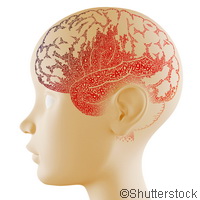Multiple thought channels secret to avoiding brain congestion, researchers report
EU-funded researchers from Germany and the United States report that brain networks may avoid traffic jams at their busiest junctions by communicating on different frequencies, according to findings in a new paper published in the journal Nature Neuroscience. The work was boosted by the BRAINSYNC ('Large scale interactions in brain networks and their breakdown in brain diseases') project which was funded under the 'Health' Theme of the EU's Seventh Framework Programme (FP7) to the tune of EUR 2,978,242. Normally, when scientists study brain networks, areas of the brain that regularly work together, they use magnetic resonance imaging (MRI) which tracks blood flow. This practice is founded on the assumption that an increase in blood flow to part of the brain indicates increased activity in the brain cells of that region. Instead, for this study the team, made up of researchers from the University Medical Center Hamburg-Eppendorf in Germany, Washington University School of Medicine in St. Louis in the United States and the University of Tübingen in Germany, used a technique called magnetoencephalography (MEG) to analyse brain activity in 43 healthy volunteers. One of the study authors, Maurizio Corbetta from Washington University School of Medicine, outlines the limitations of MRI: 'It only allows us to track brain cell activity indirectly, and it is unable to track activity that occurs at frequencies greater than 0.1 hertz, or once every 10 seconds. We know that some signals in the brain can cycle as high as 500 hertz, or 500 times per second.' MEG however can detect very small changes in magnetic fields in the brain that are caused by many cells being active at once and it can detect these signals at rates up to 100 hertz. Lead author Joerg Hipp who is based at both the University Medical Center Hamburg-Eppendorf and the University of Tübingen reports on their findings: 'We found that different brain networks ticked at different frequencies, like clocks ticking at different speeds.' Networks that included the hippocampus, a brain area critical for memory formation, tended to be active at frequencies around 5 hertz. Networks comprising areas involved in the senses and movement were active between 32 hertz and 45 hertz. Many other brain networks were active at frequencies between 8 hertz and 32 hertz. These 'time-dependent' networks could be described as resembling different airline route maps, overlapping but each ticking at a different rate. Maurizio Corbetta comments: 'There have been a number of MRI studies of depression and schizophrenia showing 'spatial' changes in the organisation of brain networks. MEG studies provide a window into a much richer 'temporal' structure. In the future, this might offer new diagnostic tests or ways to monitor the efficacy of interventions in these debilitating mental conditions.' The overall aim of the BRAINSYNC project was to understand how neuronal assemblies exchange information (functional or neuronal communication), and how variability in neuronal communication explains variability in behavioural performance, both in the intact and injured brain. 'Many neurological and psychiatric conditions are likely to involve problems with signaling in brain networks,' says Maurizio Corbetta. 'Examining the temporal structure of brain activity from this perspective may be especially helpful in understanding psychiatric conditions like depression and schizophrenia, where structural markers are scarce.'For more information, please visit:University Medical Center Hamburg-Eppendorf:http://www.uke.de/index_ENG.php
Countries
Germany, United States



